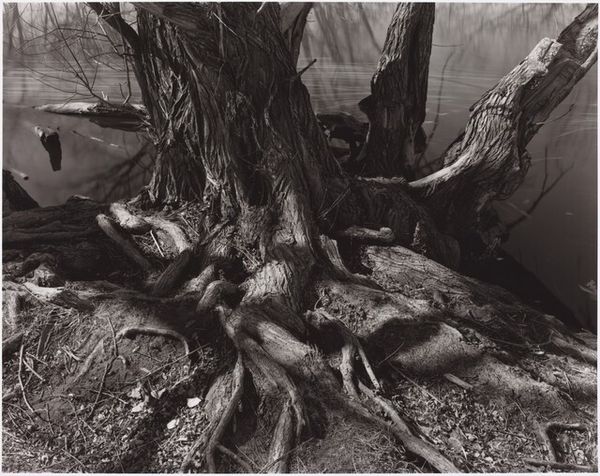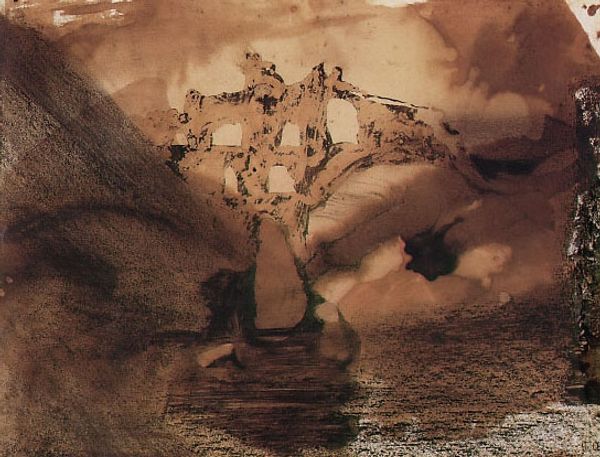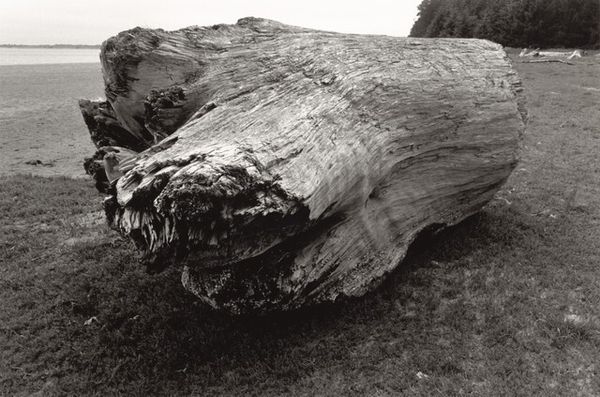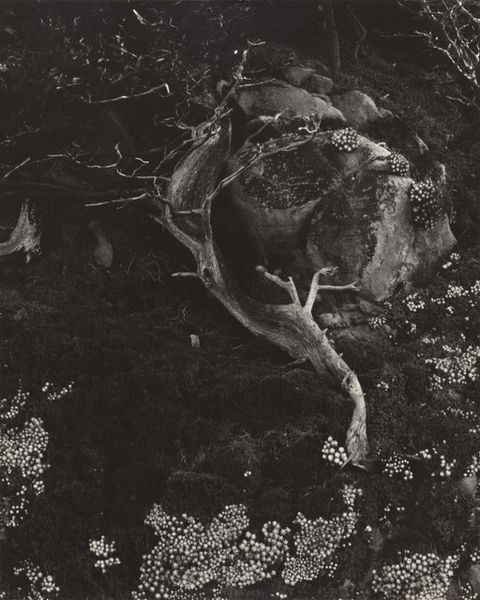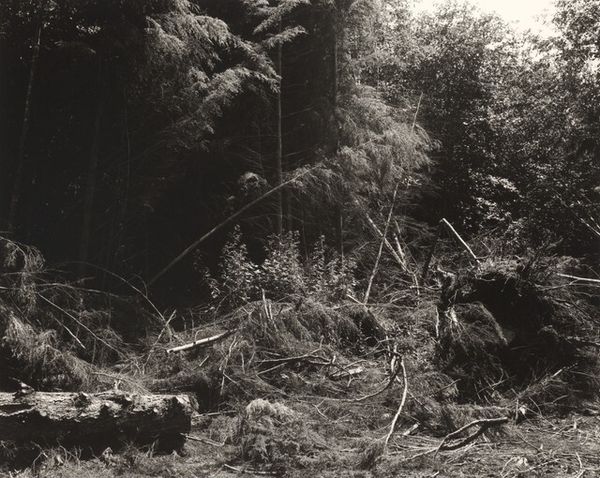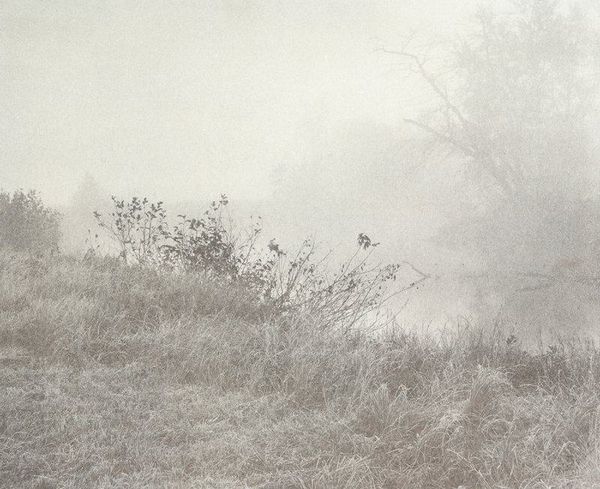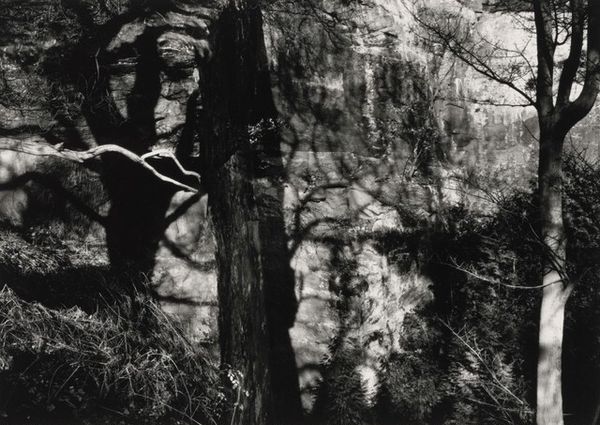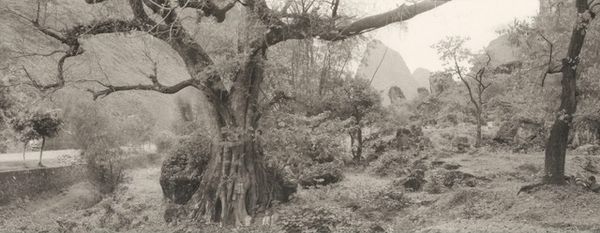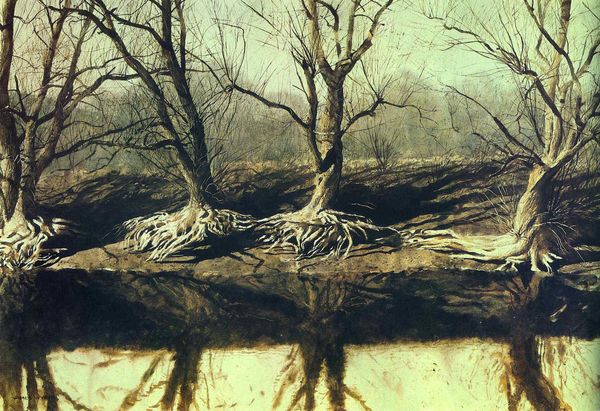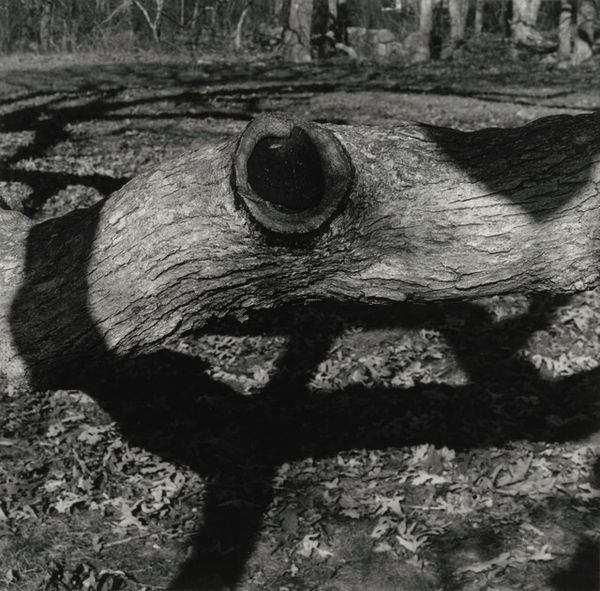
Copyright: Arsen Savadov,Fair Use
Curator: Arsen Savadov's photograph "Kokto," taken in 2001, presents a curious tableau. What are your initial thoughts? Editor: I am immediately struck by its almost theatrical atmosphere. There’s an intentional staged quality that begs questions about performance, identity, and the constructed nature of reality, what do you see? Curator: Yes, the composition is key. Note the two figures, each positioned distinctively within the landscape. One blends almost seamlessly into a bizarrely ornamented tree, while the other is reclining among artificial looking rocky outcrops. The contrast is deliberate, but there is a dialogue created. Editor: Absolutely. To me, the artifice is crucial, considering it's a photograph of figures situated within what seems to be a garden setting. Are these wealthy people engaging in some private recreation, hidden from view? This image reflects socio-economic class. Curator: Perhaps, but I also think that this work has clear nods to the tradition of portraiture and history painting. Savadov manipulates elements of lighting and setting to emphasize compositional tension between these elements, while challenging representational norms in portraiture itself. The costuming, as well as set design creates layers. Editor: Precisely! Think about how that artifice complicates our understanding of place. Is this manicured 'nature' really nature at all, or it is, perhaps, symbolic of something more ominous given the wealth disparities and displacement following the end of the Cold War. Who does the photograph cater to and who gets cut out from this picture? Curator: An interesting angle! Although, focusing solely on context might overlook some visual details, for example, the palette choice, the framing, even the almost classical way that the reclining figure’s limb crosses itself seems a deliberate, constructed, effect that speaks to something that stands on its own visually. Editor: But isn't the "visual" always interwoven with layers of cultural meaning? Understanding who benefits and who's obscured is necessary here. Curator: Fair enough. Overall, "Kokto" remains a potent image, provoking discussions about class, place, and artistic construction. Editor: It shows us that behind every carefully constructed image there are unseen realities of power, history, and identity to uncover and address.
Comments
No comments
Be the first to comment and join the conversation on the ultimate creative platform.

